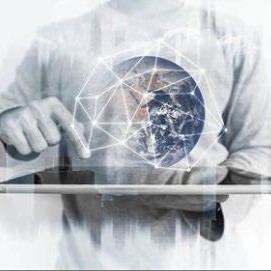




Standards digitalization is a priority of future standardization work in China, as the National Standardization Development Outline puts forward “promoting the transformation of standardization in a digital, networked and smart way”. When delivering a report at the National Standardization Work Conference earlier this year, Tian Shinhong, Vice-Minister of State Administration for Market Regulation (SAMR) and Administrator of Standardization Administration of China (SAC), stressed to “vigorously promote the development of machine readable standards, and explore the new management mechanism of national standards in the context of digitalization”, and “strengthen the research on standards digital technologies, seize the trend of cutting-edge technologies and enhance the fundamental theories of standardization”.
 An interview was carried out with Mr. Wu Hequan, Academician of the Chinese Academy of Engineering and Chair of National Standardization Expert Advisory Committee to find out his insights into standards digitalization and suggestions for future work.
An interview was carried out with Mr. Wu Hequan, Academician of the Chinese Academy of Engineering and Chair of National Standardization Expert Advisory Committee to find out his insights into standards digitalization and suggestions for future work.
Why standards digitalization is so important in the digital, networked and smart era?
Wu Hequan: The government work report of China in 2022 puts forward accelerating the integration of digital technologies and the real economy. In fact, the integration is reflected in many aspects such as how standardization integrates with digital technologies. Standards digitalization refers to using digital technologies to empower standards and their whole life cycle, so that the rules and characteristics of standards can be read, transmitted and accessed by digital devices. It is expected that standards can be developed, applied and promoted in a better way by using the new generation of digital technologies. Standards digitalization includes two parts: standards format and standardization methods.
China now is carrying out research on this subject, so is the international community. International Organization for Standardization (ISO) launched a SMART programme to produce Standards that are Machine Applicable, Readable, and Transferable (SMART), which is a milestone of standardization development.
The change from paper format to machine readable format becomes possible due to the development of digital technologies, which also meet the demands of social development. As standardization has penetrated into all aspects of the real economy, and machine has replaced humans in several scenarios, machine readable standards have become an irresistible trend of social development.
Take the surveillance videos in smart cities as an example. Tens of thousands of traffic surveillance cameras are connected to the traffic control center, but the scenes they took cannot be displayed simultaneously on the screen in the monitor room. It works in this way that the surveillance videos of each road are displayed on the screen for a minute. We hope that in the future the surveillance videos of all roads can be edited into a dynamic video for city traffic via artificial intelligence technologies to greatly improve the efficiency of monitoring. Another possible method is to let computer read these videos directly so that computer can understand the whole picture without human assistance. It is not only about the changes of reading methods, from people to computer, but also about the changes of some connotations, rules or indicators in standards.
We are now entering a new era of information technology; the whole society is evolving in a more digitalized, networked and smarter way. In the standardization area, it is reflected as standards digitalization.
What changes will standards digitalization bring?





 Finish the registration payment to unlock meeting access.
Finish the registration payment to unlock meeting access.